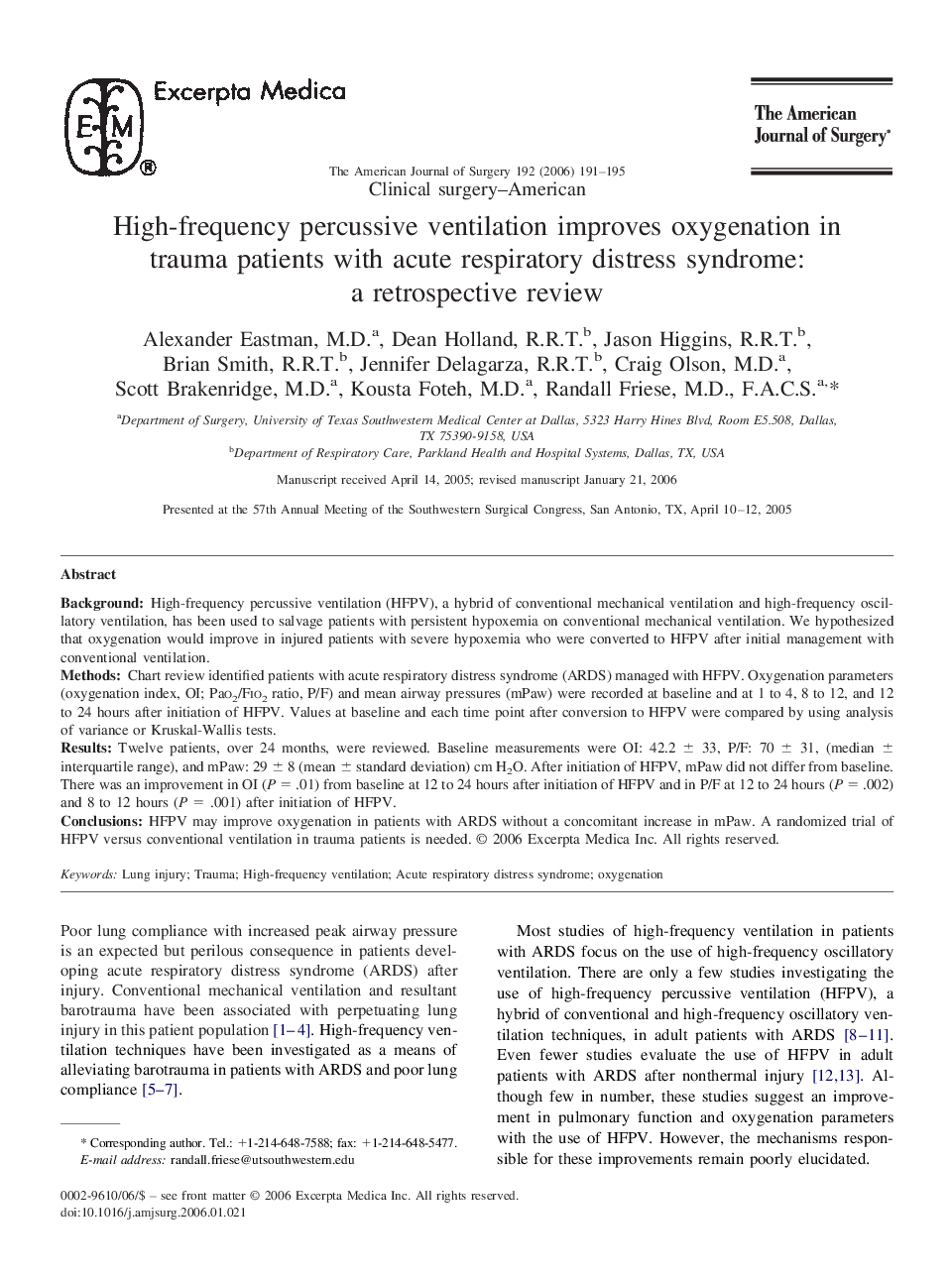| Article ID | Journal | Published Year | Pages | File Type |
|---|---|---|---|---|
| 4282025 | The American Journal of Surgery | 2006 | 5 Pages |
BackgroundHigh-frequency percussive ventilation (HFPV), a hybrid of conventional mechanical ventilation and high-frequency oscillatory ventilation, has been used to salvage patients with persistent hypoxemia on conventional mechanical ventilation. We hypothesized that oxygenation would improve in injured patients with severe hypoxemia who were converted to HFPV after initial management with conventional ventilation.MethodsChart review identified patients with acute respiratory distress syndrome (ARDS) managed with HFPV. Oxygenation parameters (oxygenation index, OI; Pao2/Fio2 ratio, P/F) and mean airway pressures (mPaw) were recorded at baseline and at 1 to 4, 8 to 12, and 12 to 24 hours after initiation of HFPV. Values at baseline and each time point after conversion to HFPV were compared by using analysis of variance or Kruskal-Wallis tests.ResultsTwelve patients, over 24 months, were reviewed. Baseline measurements were OI: 42.2 ± 33, P/F: 70 ± 31, (median ± interquartile range), and mPaw: 29 ± 8 (mean ± standard deviation) cm H2O. After initiation of HFPV, mPaw did not differ from baseline. There was an improvement in OI (P = .01) from baseline at 12 to 24 hours after initiation of HFPV and in P/F at 12 to 24 hours (P = .002) and 8 to 12 hours (P = .001) after initiation of HFPV.ConclusionsHFPV may improve oxygenation in patients with ARDS without a concomitant increase in mPaw. A randomized trial of HFPV versus conventional ventilation in trauma patients is needed.
